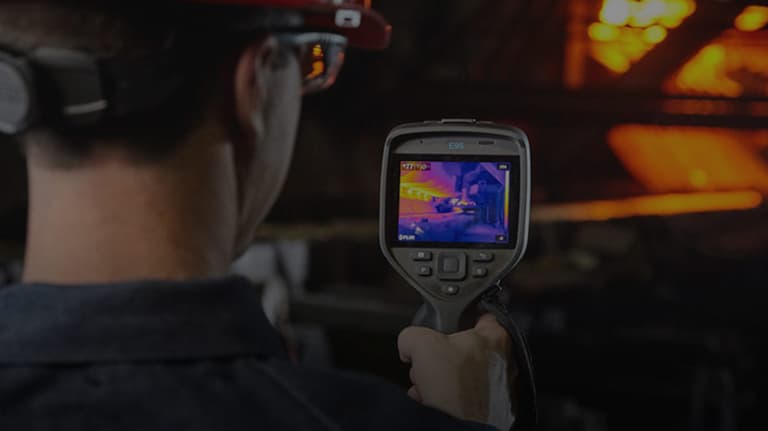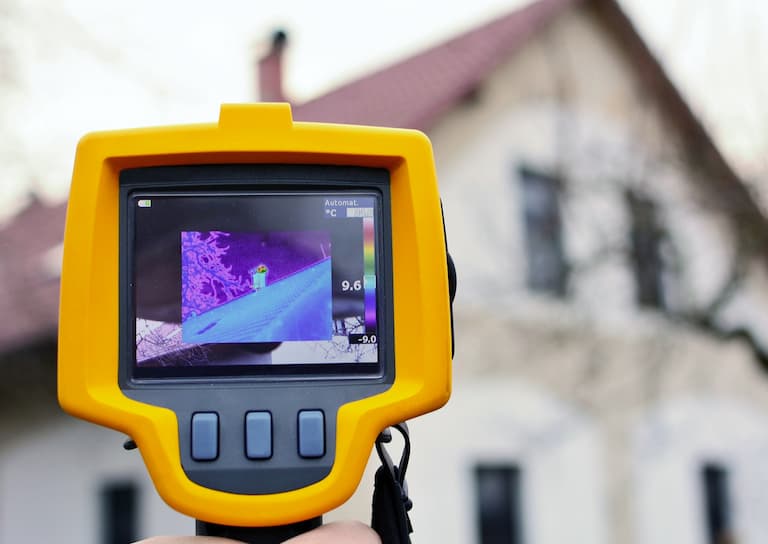Contents [hide]
To say technology has changed our world in more ways than one would be an understatement. As modern-day people, many of us simply can’t imagine what life would be like without our beloved devices.
And let’s be clear, besides the popular gadgets that people buy mainly to keep up with trends, there are also the devices that many professionals rely upon. These are necessities that truly help us get things done in no time. Let’s take the useful and highly practical thermal cameras as an example.
What Are Thermal Imaging Cameras?
They’re handheld devices that help detect the thermal (i.e. heat) energy of objects. They capture and create images by using this infrared radiation emitted from the objects even in low-light conditions.
In short, thermal cameras are created to translate the heat energy into visible light which would explain why they consist of a screen that captures this.
What Are Thermal Imaging Cameras Used For?

Although they were primarily developed for the purposes of surveillance in military use, they’ve long gone past this and proved they can be of assistance with various applications. This would explain why nowadays there’s such a vast range of thermal imaging camera designs that amaze with their compactness, as much as their features.
Such handy devices are crucial in a broad array of applications, including for daily life. Some of them are making electrical maintenance a piece of cake by giving insight into faulty or overheating joints and minimising failures. Others take surveillance to a higher level than regular CCTVs, and there are multi-use models that are great for carrying out building and mechanical inspections, and detecting gas leaks, pests, and fires even in low-visibility areas.
Another area where these cameras excel is performing checkups on animals, particularly when determining temperature, and whether or not there are fluctuations. Don’t think they don’t turn out to be essential for recreational use either – a camera thermal in design can make your wildlife watching and photography a great deal more fun, especially after the sun sets.
Okay, now that we’ve shown how beneficial a thermal camera can be, let’s see what it takes to find the ideal one.
How to Choose a Thermal Camera?
Depending on the specific use you intend to buy it for, you can turn the shopping experience into less of a hassle by focusing on the features. Aside from quality and price, features are the key components that could help you narrow down your options and make a better decision. My suggested shopping steps are:
Check the Resolution

You may not have considered resolution to be a top priority before the purchase, but trust me on this one. Since they’re different from regular visible-light cameras, they make up for the images by the higher resolution. This is especially of great importance when detecting smaller objects, so be sure to look into the number of pixels described by the resolution.
The common resolution choices you can find with today’s advanced thermal imaging camera models are 160 x 120, 320 x 240, and 640 x 480 pixels. Remember, the higher the resolution the better the image.Pay Attention to Heat
Sensitivity and Temperature Range
These two features aren’t something you want to overlook because they indicate how sensitive the chosen camera is to temperature differences, as well as how high or low temperatures it can measure – in other words the maximum and minimum temperatures. Take animal health checkups as an example, the camera can detect the slightest temperature differences and indicate a case of a health issue.
Mind the Connectivity
Checking the heat ranges and taking thermal images is all handy but not that much if you can’t share this info so if you want to get a quality thermal imaging camera you ought to see to it that it allows you to connect it and share the info to other devices with memory card or Wi-Fi. This significantly speeds things up, which is something you want when carrying out inspections – time is of the essence!
Look for Imaging Analysis Features
To be able to take optimal heat detection images and analyse them properly, having advanced features can be of assistance. This could be a variety of colour palettes that provide improved contrasting with grey, prism, medical, glowbow, rain, iron, rainbow and grey-red being great examples. It could also be in the form of multiple measure modes, advanced thermal imaging algorithms, a wide field of view, as well as focus and focus-free modes.
Don’t Forget Durability
The features are crucial, there’s no doubt about it. But, of what use would the camera be to you if you try it out a couple of times before you’re in need of another purchase due to lack of durability? A sturdy design is a must, and the best way to ensure this is to check the materials it’s made from (the mechanical housing and the lens to be exact), plus whether it’s drop-proof, and has protection from water and dust.

